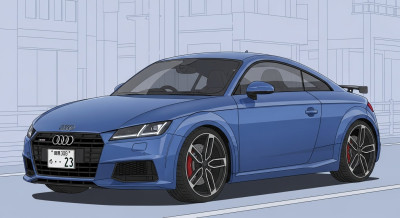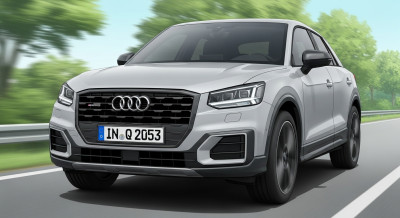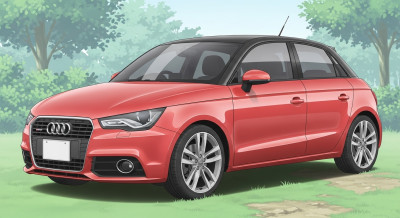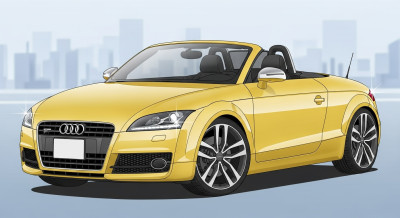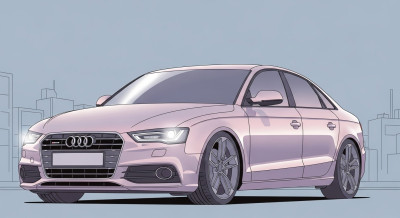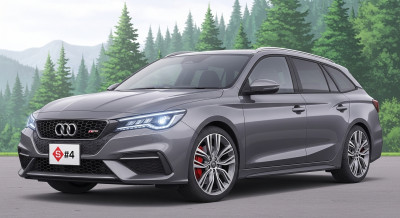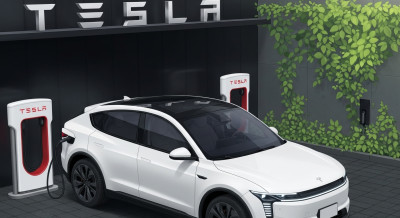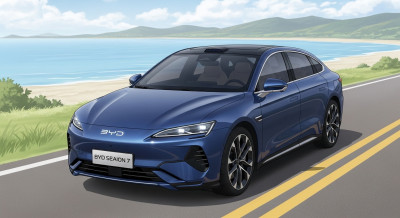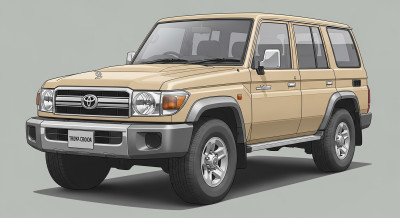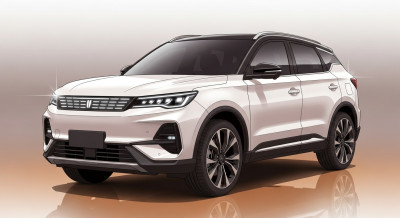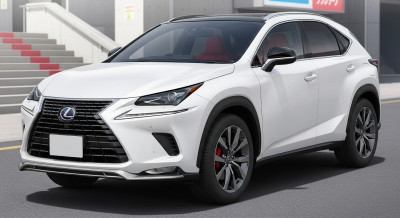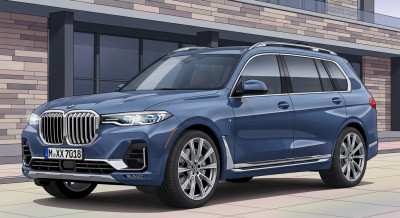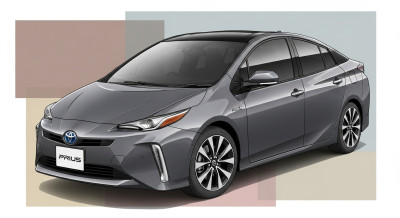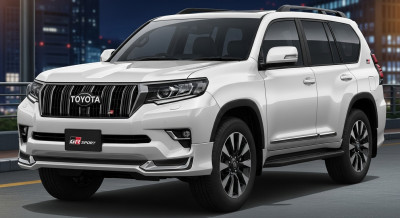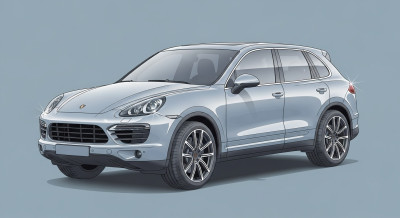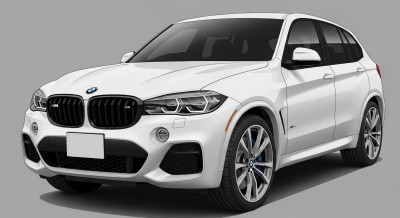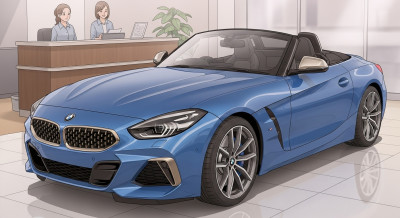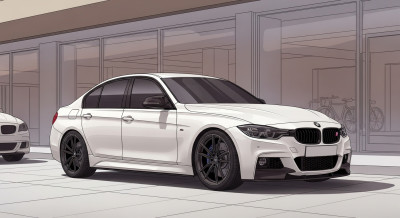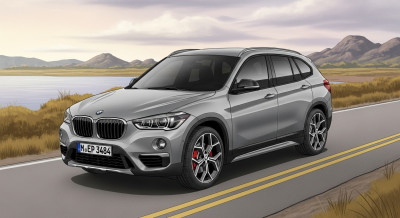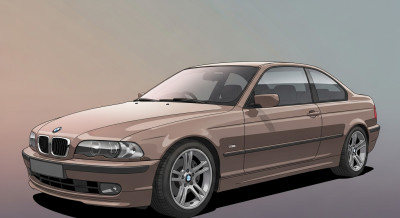2020 Audi RS Q3 Sportback - Compact Performance SUV
2020 Audi RS Q3 Sportback - Drive and Exterior. Color: Kyalami Green. Subscribe.
2020 Audi RS Q3 Technical Specifications:
Engine type: Inline 5-cylinder engine
Displacement in cc / bore x stroke in mm / compression: 2480 / 82.5 x 92.8 / 10.0
Max. power output in kW (hp) / at rpm: 294 (400) / 5850 - 7000
Max. torque in Nm (lb-ft) / at rpm: 480 (354.0) / 1950 - 5850
Top speed in km/h (mph): 250 (155.3)
Acceleration, 0-100 km/h (0-62.1 mph) in sec: 4.5
Combined fuel consumption in l/100km: 8.9 - 8.8
Within the Audi Q3 family, the RS Q3 and RS Q3 Sportback are the sporty flagships. The performance figures for the compact engines are compelling: five-cylinder, 400 hp power output, 480 Nm of torque, quattro all-wheel drive. The five-cylinder engine is a modern classic.
The multi-award-winning five-cylinder engine gains a good 17 percent increase in power at an unchanged displacement of 2,480 cc. The engine’s maximum torque is available over the very broad rev range between 1,950 and 5,850 r p m. The RS Q3 and RS Q3 Sportback sprint from zero to 100 km/h (62 mph) in just 4.5 seconds. The top speed is regulated at 250 km/h (155 mph) or an optional 280 km/h (174 mph).
At less than 50 centimeters (19.7 in) in length, the 2.5 TFSI engine is extremely compact and is 26 kg (57.3 lb) lighter than the previous model. Its crankcase is made of aluminum, which alone saves 18 kg (39.7 lb). Elaborate measures reduce internal friction while at the same time increasing power output. The cylinder liners are plasma-coated; the crankshaft main bearings are six millimeters (0.2 in) smaller in diameter. The crankshaft is hollow bored and is therefore 1 kg (2.2 lb) lighter, while the aluminum pistons have integrated channels for oil cooling. In the short warm-up phase after a cold start, the switchable water pump does not circulate the coolant in the cylinder head – the 2.5 TFSI engine thus reaches its operating temperature more quickly. This lowers the coefficient of friction and reduces fuel consumption.
The power from the five-cylinder engine flows via a seven-speed S tronic to the quattro permanent all-wheel drive that distributes the power as needed between the axles via a multi-plate clutch. The wheel‑selective torque control perfects the safe and agile handling.
The Audi drive select dynamic handling system influences the quattro drive and other components such as steering, suspension, S tronic, engine characteristic and sound. Depending on the selected equipment variant, there is a choice of five or six modes: comfort, auto, dynamic, efficiency and individual or, as an alternative to the individual mode, the two new RS modes RS1 and RS2. Via the MMI the driver can adjust and save the two RS modes individually. Simply pressing the new “RS MODE” steering wheel button provides rapid access to the two new modes and allows the driver to switch between modes.
The standard RS sport suspension lowers the body by 10 millimeters (0.4 in) compared with the Audi Q3 and Q3 Sportback. Its consistently sporty tuning satisfies the basic requirements for the outstanding handling of the two sport compacts. The RS-tuned progressive steering also conveys close contact with the road even on fast bends.
At the front axle with its MacPherson design featuring lower wishbones, the track width is 1,590 millimeters (5.22 ft). In the rear, the four-link design provides a track width of 1,583 millimeters (5.19 ft). For the first time on a compact high-performance SUV, Audi Sport offers 21-inch wheels in various rim designs. Behind the standard 20-inch or optional 21-inch wheels, the all-new six-piston RS steel brake system works with ventilated and perforated disks measuring 375 millimeters (14.8 in) (front) and 310 millimeters (12.2 in) (rear, not perforated). Their brake calipers are painted black as standard and are available in red as an option. The brake calipers of the optional, all-new RS ceramic brakes are available optionally in gray, red or blue. In front, the braking power is generated by newly developed monoblock aluminum calipers and ceramic brake disks that are 380 millimeters (15.0 in) in diameter. At the rear, floating calipers and steel disks measuring 310 mm (12.2 in) in diameter ensure the necessary deceleration.
The new RS Q3 and RS Q3 Sportback are designed as fully fledged five-seater models and also offer maximum everyday usability for all their sportiness. The rear seats can be moved fore-aft as standard by 150 millimeters (5.9 in) in the RS Q3 or 130 millimeters (5.1 in) in the RS Q3 Sportback; their three-way split backrests can be tilted in seven stages. The luggage compartment holds 530 liters (18.7 cu ft), with the backrests folded down the figure rises to 1,525 liters (53.9 cu ft) (Sportback: 1,400 liters (49.4 cu ft)). #2020 Audi RS Q3 Sportback #sportback #audi #Q
2020 Audi RS Q3 Sportback - Drive and Exterior. Color: Kyalami Green. Subscribe.
2020 Audi RS Q3 Technical Specifications:
Engine type: Inline 5-cylinder engine
Displacement in cc / bore x stroke in mm / compression: 2480 / 82.5 x 92.8 / 10.0
Max. power output in kW (hp) / at rpm: 294 (400) / 5850 - 7000
Max. torque in Nm (lb-ft) / at rpm: 480 (354.0) / 1950 - 5850
Top speed in km/h (mph): 250 (155.3)
Acceleration, 0-100 km/h (0-62.1 mph) in sec: 4.5
Combined fuel consumption in l/100km: 8.9 - 8.8
Within the Audi Q3 family, the RS Q3 and RS Q3 Sportback are the sporty flagships. The performance figures for the compact engines are compelling: five-cylinder, 400 hp power output, 480 Nm of torque, quattro all-wheel drive. The five-cylinder engine is a modern classic.
The multi-award-winning five-cylinder engine gains a good 17 percent increase in power at an unchanged displacement of 2,480 cc. The engine’s maximum torque is available over the very broad rev range between 1,950 and 5,850 r p m. The RS Q3 and RS Q3 Sportback sprint from zero to 100 km/h (62 mph) in just 4.5 seconds. The top speed is regulated at 250 km/h (155 mph) or an optional 280 km/h (174 mph).
At less than 50 centimeters (19.7 in) in length, the 2.5 TFSI engine is extremely compact and is 26 kg (57.3 lb) lighter than the previous model. Its crankcase is made of aluminum, which alone saves 18 kg (39.7 lb). Elaborate measures reduce internal friction while at the same time increasing power output. The cylinder liners are plasma-coated; the crankshaft main bearings are six millimeters (0.2 in) smaller in diameter. The crankshaft is hollow bored and is therefore 1 kg (2.2 lb) lighter, while the aluminum pistons have integrated channels for oil cooling. In the short warm-up phase after a cold start, the switchable water pump does not circulate the coolant in the cylinder head – the 2.5 TFSI engine thus reaches its operating temperature more quickly. This lowers the coefficient of friction and reduces fuel consumption.
The power from the five-cylinder engine flows via a seven-speed S tronic to the quattro permanent all-wheel drive that distributes the power as needed between the axles via a multi-plate clutch. The wheel‑selective torque control perfects the safe and agile handling.
The Audi drive select dynamic handling system influences the quattro drive and other components such as steering, suspension, S tronic, engine characteristic and sound. Depending on the selected equipment variant, there is a choice of five or six modes: comfort, auto, dynamic, efficiency and individual or, as an alternative to the individual mode, the two new RS modes RS1 and RS2. Via the MMI the driver can adjust and save the two RS modes individually. Simply pressing the new “RS MODE” steering wheel button provides rapid access to the two new modes and allows the driver to switch between modes.
The standard RS sport suspension lowers the body by 10 millimeters (0.4 in) compared with the Audi Q3 and Q3 Sportback. Its consistently sporty tuning satisfies the basic requirements for the outstanding handling of the two sport compacts. The RS-tuned progressive steering also conveys close contact with the road even on fast bends.
At the front axle with its MacPherson design featuring lower wishbones, the track width is 1,590 millimeters (5.22 ft). In the rear, the four-link design provides a track width of 1,583 millimeters (5.19 ft). For the first time on a compact high-performance SUV, Audi Sport offers 21-inch wheels in various rim designs. Behind the standard 20-inch or optional 21-inch wheels, the all-new six-piston RS steel brake system works with ventilated and perforated disks measuring 375 millimeters (14.8 in) (front) and 310 millimeters (12.2 in) (rear, not perforated). Their brake calipers are painted black as standard and are available in red as an option. The brake calipers of the optional, all-new RS ceramic brakes are available optionally in gray, red or blue. In front, the braking power is generated by newly developed monoblock aluminum calipers and ceramic brake disks that are 380 millimeters (15.0 in) in diameter. At the rear, floating calipers and steel disks measuring 310 mm (12.2 in) in diameter ensure the necessary deceleration.
The new RS Q3 and RS Q3 Sportback are designed as fully fledged five-seater models and also offer maximum everyday usability for all their sportiness. The rear seats can be moved fore-aft as standard by 150 millimeters (5.9 in) in the RS Q3 or 130 millimeters (5.1 in) in the RS Q3 Sportback; their three-way split backrests can be tilted in seven stages. The luggage compartment holds 530 liters (18.7 cu ft), with the backrests folded down the figure rises to 1,525 liters (53.9 cu ft) (Sportback: 1,400 liters (49.4 cu ft)). #2020 Audi RS Q3 Sportback #sportback #audi #Q3
 LEXUS
LEXUS  AUDI
AUDI  PORSCHE
PORSCHE  ROLLS-ROYCE
ROLLS-ROYCE  LAND ROVER
LAND ROVER  FERRARI
FERRARI  MASERATI
MASERATI  CADILLAC
CADILLAC  CHRYSLER JEEP
CHRYSLER JEEP 





![[HDR] 2023 Audi RS Q3 Sportback (400hp) - Interior and Exterior Details](https://i.ytimg.com/vi/h5zizZsbctE/mqdefault.jpg)









